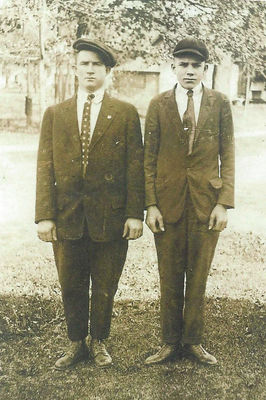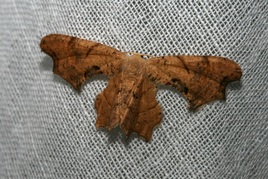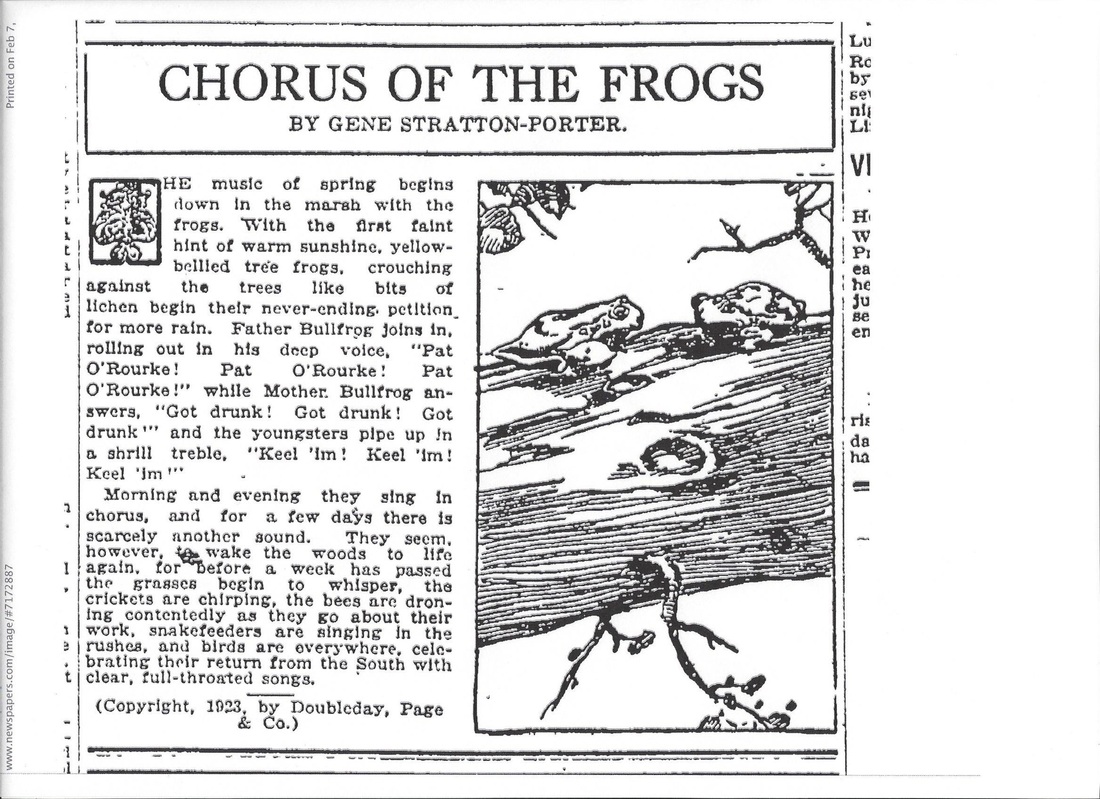 Ray Boze, right
Ray Boze, right In a May 30, 1911, speech that Gene gave to the advanced English class of Professor R. W. Brown, she stated, “All my characters were either real persons or composite persons, made up of characteristics selected from people of my acquaintance.” For her inspiration for Freckles she did not have to look farther than her home in Geneva.
Ray Boze was born Aug. 7, 1883, in Geneva. The son of David and Sarah (Campbell) Boze, he was fair, red-haired and freckled. Ray’s grandfather, Peter Boze, a native of Ohio, was the patriarch of the family who first settled on the north side of Geneva. According to his great-niece, Pam Wilson, Ray’s nickname was “Red” and his given name was Raul.
In the 1890s, Ray went to work as her stable boy. In 1935, Ray said that Gene was “extremely kind and thoughtful, but quite particular about the appearance of her home and stable and was especially concerned over the appearance of her carriage and beautiful white horse.” The horse had to be always well-groomed and it was his duty to see to it that the barn was as clean as anyone’s home. Ray told of how he lived in the carriage house and drove Gene around Limberlost land in spring, summer and fall.
The character Freckles used the conservatory door at the cabin when he visited the Birdwoman (Gene). One can imagine that she saw Ray use this door many times.
In a 1976 interview, Geneva native Mamie Hawbaker Schenbeck, 88, stated that Ray Boze, her one-time stable boy, was the inspiration for Freckles. According to Mamie, Ray had one good arm. Gene frequently came to the Hawbaker farm along the Wabash River to search for bird nests and photograph them. Mamie’s father, Daniel, is mentioned in “Friends in Feathers.” Mamie knew the Boze family, including Ray and his siblings.
Ray married Cordelia Geesy in 1909 in Winchester, Indiana. It is believed that he outlived Cordelia. On Jan. 31, 1920, he married Verne Parker and moved to Hanging Garden in Jasper County, Indiana, where he would remain the next 40 years.
His 1960 obituary told of Ray being the subject of the novel and of his association to the “celebrated authoress.” Like the character, Ray was a humble man and was buried under a simple headstone in Jasper County.
Writer’s note: Special thanks to the Jasper County (Indiana) Historical Society, Rensselaer (Indiana) Library, Berne (Indiana) Library, Sue Caldwell, Pam Wilson and the late David MacLean for their help with this article.
Terri Gorney of Fort Wayne is on the Friends of the Limberlost board of directors in Geneva. Contact her at [email protected]. The Limberlost site is open all year ’round.


 RSS Feed
RSS Feed
